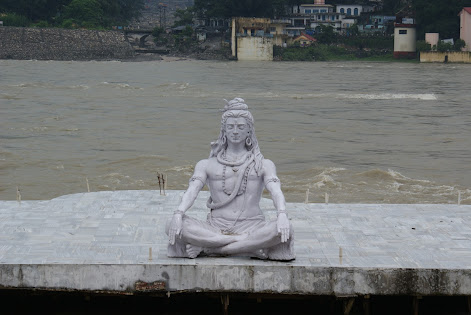Shiv Parvati: The Divine Love Story of Shiv Parvati Vivah |भगवान शिव और माता पार्वती के विवाह की कथा
Shiv Parvati, the divine couple of Hindu mythology, embodies the essence of eternal love, devotion, and harmony. Their story is a source of inspiration and spiritual significance, revered by millions of devotees worldwide. In this article, we will delve into the enchanting tale of Shiv Parvati, exploring their love, the mystical marriage, and the timeless symbolism they represent. Along the way, we will also present some captivating Shiv Parvati wallpapers that beautifully capture the essence of their divine union. 1. The Divine Love Story of Shiv Parvati The love story of Shiv Parvati is a saga of devotion and perseverance. Goddess Parvati, the reincarnation of Sati, the first wife of Lord Shiva, performed intense penance to win Shiva’s heart. Her unwavering dedication and austere practices moved Shiva, who had immersed himself in meditation after Sati’s demise. The divine couple’s love story beautifully showcases the transformative power of love and the eternal bond they share. 2. The Grand Wedding of Shiv Parvati The marriage of Shiv Parvati, known as “Shiv Parvati Vivah,” is a grand event celebrated with great enthusiasm by devotees. The wedding symbolizes the union of the divine masculine and feminine energies, representing the balance and harmony in the universe. The joyous occasion is marked by rituals, prayers, and festivities, with devotees seeking blessings for marital bliss and happiness. 3. Symbolism and Significance of Shiv Parvati The divine couple of Shiv Parvati holds immense symbolism and spiritual significance. Lord Shiva symbolizes the unmanifested power, while Goddess Parvati represents the manifested energy of the universe. Together, they embody the dual nature of existence, the complementary forces of creation and destruction, and the eternal cycle of life. 4. Shiv Parvati Wallpapers: Capturing Divine Love Shiv Parvati wallpapers are a visual delight for devotees, depicting the enchanting moments shared by the divine couple. These wallpapers often portray Shiva in his ascetic form, adorned with snakes and ash, and Parvati as the gentle, loving goddess with a radiant smile. The wallpapers serve as a reminder of their eternal love and divine grace, inspiring devotees on their spiritual journey. 5. Seeking Blessings from Shiv Parvati Devotees worship Shiv Parvati with utmost reverence and faith, seeking their blessings for various aspects of life. Lord Shiva is believed to be the giver of boons and the remover of obstacles, while Goddess Parvati is the embodiment of maternal love and protection. Together, they bestow devotees with strength, wisdom, and blessings for a fulfilling life. 6. The Timeless Teachings of Shiv Parvati The story of Shiv Parvati imparts profound teachings and life lessons. Their love story teaches us the value of patience, perseverance, and the power of devotion in overcoming life’s challenges. The balance and harmony they represent inspire individuals to seek equilibrium in their thoughts and actions, fostering inner peace and spiritual growth. 7. Modern Influence of Shiv Parvati The divine union of Shiv Parvati continues to influence modern culture and art. Their love story has been depicted in various forms, including literature, dance, music, and visual arts. Furthermore, their symbolism has inspired numerous philosophical and spiritual interpretations, captivating the minds and hearts of people worldwide. Shiv Parvati, the epitome of divine love and unity, symbolizes the eternal bond between the masculine and feminine energies. Their enchanting love story and mystical marriage are an inspiration for devotees seeking love, harmony, and spiritual growth. As we immerse ourselves in the devotion of Shiv Parvati through mesmerizing wallpapers and stories of their love, let us remember the timeless teachings they impart and seek their blessings for a life filled with joy, wisdom, and fulfillment. FAQs: Q: What is the real name of Parvati? A: The real name of Parvati, the divine consort of Lord Shiva, is believed to be “Sati” in her previous incarnation. Q: How many wives did Lord Shiva have? A: Lord Shiva is considered to have two primary wives. The first was Sati, who self-immolated, and the second is Parvati, whom he married in a subsequent birth. Q: What did Shiva teach Parvati? A: Lord Shiva imparted various teachings and wisdom to Parvati, including profound spiritual knowledge, the art of meditation, and the secrets of the universe. Q: How many marriages did Shankar ji have? A: Shankar ji, another name for Lord Shiva, is believed to have had two marriages. His first marriage was with Sati, and his second marriage was with Parvati. Q: Who is Shiva’s father? A: Lord Shiva’s father is Lord Brahma, the creator of the universe, according to Hindu mythology. Q: Why did Sati kill herself? A: Sati immolated herself as an act of self-sacrifice and devotion after her father, King Daksha, insulted Lord Shiva during a grand yajna (sacrificial ritual). Q: Who is Shiva in Hinduism? A: In Hinduism, Lord Shiva is one of the principal deities and is revered as the Supreme Being, representing both the destructive and transformative aspects of the cosmos. Q: Why did Parvati marry Shivji? A: Parvati married Shivji out of her deep love and devotion for him. She sought to be united with the divine and willingly took on the role of his eternal companion and divine consort.Shiv Parvati Read more article on shiv parvati









